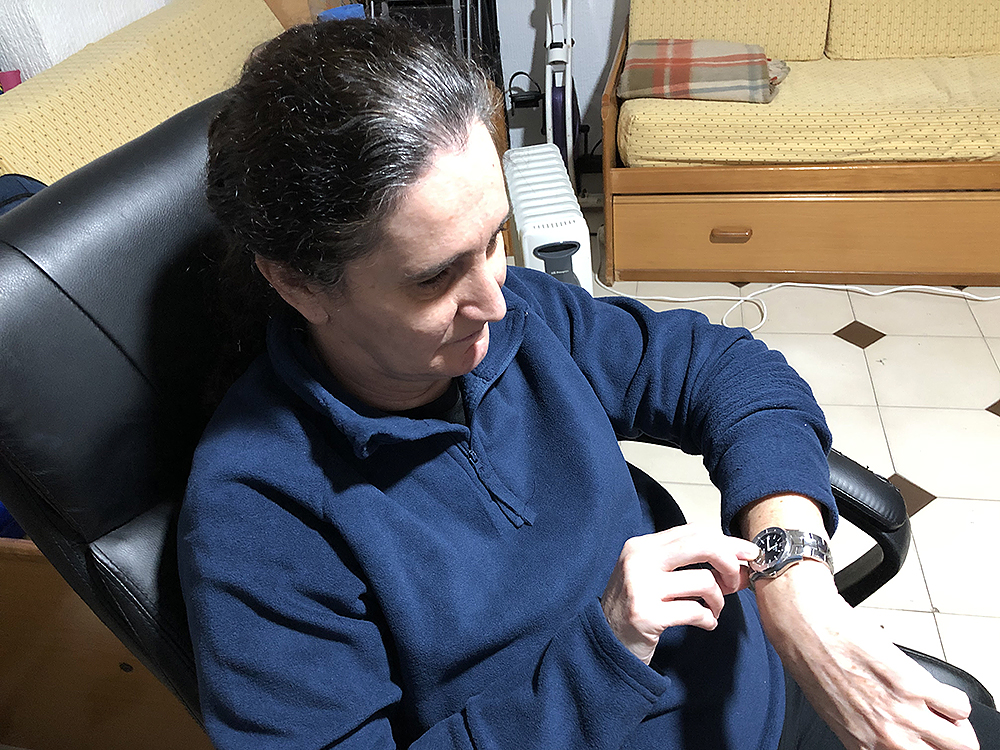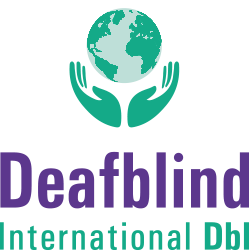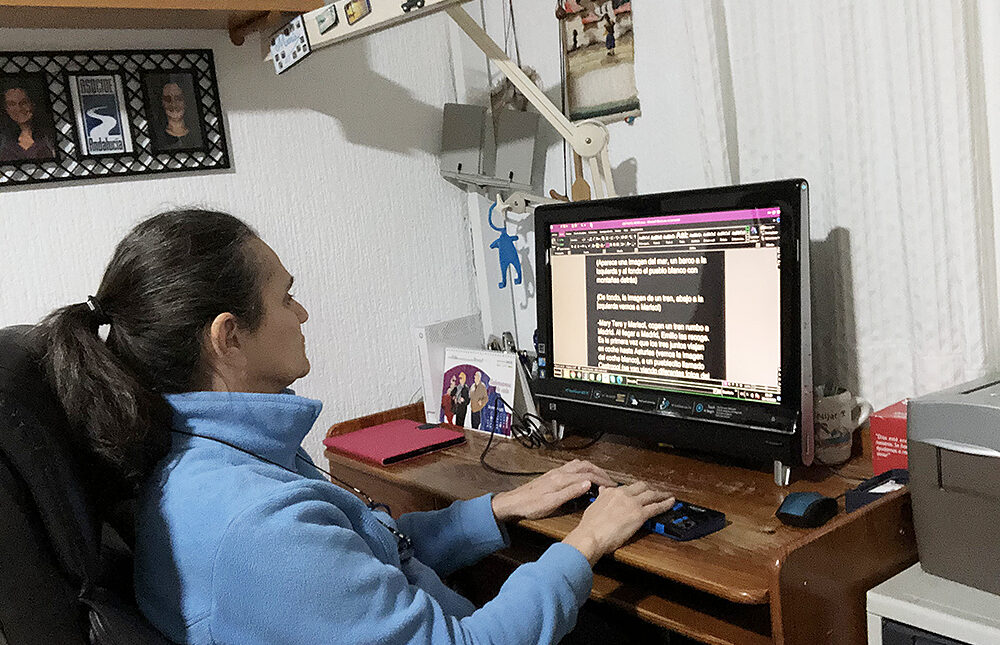Soledad and Maria Teresa are two sisters with deafblindness and Uhser Syndrome from Huelva (Spain) who tell us about their experience with the use of technology, what they use and how it helps them in their communication and access to information
What technology do you use in your day to day? Computer? Smartphone? Tablet? Tell us what you use.
What we use the most is the computer and the mobile phone, and the Braille display, but also the iPad tablet, adapted watch and liquid meter, and something else.
What needs do you have to be able to use these devices?
Although we have a rest of vision, the most important need is to be able to fully use the braille display. To continue deepening in knowing and using the braille line more fully. It is what allows us to use practically everything. To be able to master all the commands well and then be able to use the Office and Internet programs without problem and in a fast and complete way.
How do you manage to use them despite your visual and hearing impairments? What adaptations do you usually use to be able to use them? Screen readers? Braille displays? Magnifiers? Etc. Tell us how you use the devices.
In order to take advantage of our rest of vision, which we are complementing with the use of the braille line, what helps us the most is that the screens have a good contrast, and especially that the backgrounds of the screens are dark so as not to dazzle, and thanks to the zoom, the characters and images are larger. We also use the camera of the mobile phone or the table to capture images that we can later see better enlarged.
What other devices do you also use everyday? Bluetooth watches and bracelets? Alarm clocks? Tell us about any technology you use in your day by day, what it is, what you use it for, how you use it and how it helps you.
There are many things, but what helps us the most is being able to use devices that help us to wake up, alarm clock with vibration, and especially the adapted Tissot clock which is magnificent because in a single device we have that alarm clock function in addition to the clock, alarm, etc.

Do you like reading? How do you read: in braille, in voice with your hearing aids, on the screen? What difficulties do you find and how do you solve them?
We really like to read. If we want to read visually with the iPad it is fantastic because with a black background and good contrast adapted to be able to read. When not, also with the braille display. We read through Ibook, Kindle and braille books from the ONCE digital library, either on the computer or also from the ONCE GOLD App.
What Apps and smartphone utilities help you the most in your communication and access to information? Social networks? WhatsApp? Utilities to manage aspects of your autonomy and your day to day: banks, health, recognition of objects and characters ?, etc. Tell us about the ones you use the most and the help they give you.
There are many Apps that help deafblind people, but above all those that allow us to communicate, such as WhatsApp, Facebook, etc. Then, many more and to say a few: Goall, ONCE Touch Communicator. speech recognizers like Audio to text, Listenall or Transcribe, image and OCR recognizers like TapTapSee, Prizmo GO, Seeing Ai or color recognizers like Coloredeye or the ONCE Color Identifier. There are so many Apps that it is impossible to cover and they all help us.
What do you miss when it comes to using technology? If companies and entities made more investment and allocated more resources to facilitate technology for deafblind people, what do you think would be more interesting for deafblind people if it was researched and developed?
Many things and many needs that deafblind people have that could be solved with technology are missing. Just to give a few examples: thermometers in braille or by vibration or with a large screen, than the buttons of household appliances such as the ceramic hob, microwave, oven, washing machine or scale or toaster. That they could be more accessible and have adaptations for deafblind people, with braille marking or more luminosity.
And above all also the possibility of being able to access everything audiovisual, movies, videos, etc. Have audio description that could be accessible in braille and that the subtitles are also more accessible for us.
What programs and technological devices do you think are not accessible to deafblind people?
We particularly miss greater accessibility to video calling platforms and digital design programs.
It is also important to be able to have technological resources that allow us to have a higher level of information about emergencies at home and in other environments, to be able to have information about what is happening in those situations and above all to have the security of being able to cross the street without danger because we have the help of devices that allow us to know the status of the traffic lights and when we can cross.
Tell us what you want about your experience with technology and what it means for you as a person with deafblindness to be able to use accessible technology: what solutions and for what aspects of your life and your day to day do you see that the use of these technologies helps you : For your communication? How does it help aspects of your daily life? To access the information?
Technology is fundamental for us and the more all these aspects are developed it will allow us to be much more connected and within each environment, despite our difficulties.

